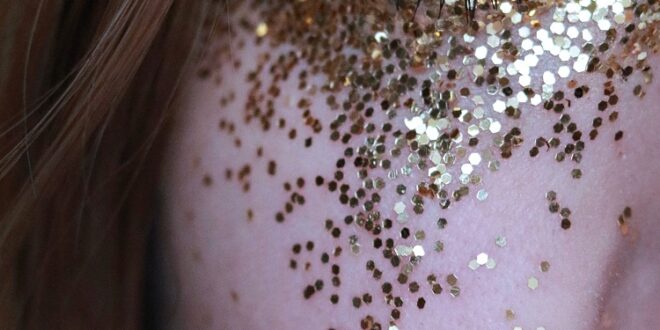A degloved face is a traumatic injury with life-altering consequences that can leave victims with both physical and emotional scars. This horrifying condition occurs when the skin and soft tissues of the face are forcibly separated from the underlying bone and muscle. In this article, we will explore the causes of degloved face injuries, their immediate and long-term treatment, and the emotional toll they take on survivors.
Understanding Degloved Face Injuries
A degloved face injury is a severe type of facial trauma, often caused by high-impact accidents, such as car crashes, motorcycle accidents, industrial mishaps, or falls from significant heights. This type of injury occurs when the skin and underlying soft tissues, including muscles and blood vessels, are forcibly separated from the bones of the face.
The term “degloved” is quite literal in this context; it’s as if the skin and underlying tissues have been stripped from the face, leaving the raw bone and muscle exposed. The extent and severity of the injury can vary widely, with some cases involving partial degloving while others result in a near-total loss of facial tissue.
Causes of Degloved Face Injuries
Several factors can contribute to degloved face injuries, most commonly as a result of the following incidents:
Motor Vehicle Accidents: High-speed collisions involving cars, motorcycles, or bicycles can lead to facial degloving injuries due to the forces involved. Impact with hard surfaces or ejection from a vehicle can cause this type of trauma.
Industrial Accidents: Workers in construction, manufacturing, and other industries are at risk of degloved face injuries when heavy machinery or equipment malfunctions, leading to crushing or trapping facial tissue.
Falls from Heights: Falls from elevated areas, such as scaffolding or ladders, can lead to severe facial injuries if the victim’s face makes direct contact with the ground or other objects during the fall.
Animal Bites: In rare cases, aggressive animal attacks, particularly by large dogs, can result in degloved face injuries, especially in children and vulnerable individuals.
Acts of Violence: Physical assaults or domestic violence incidents can also lead to degloved face injuries when the victim’s face is subjected to severe force or blunt trauma.
Immediate Treatment and Surgical Intervention
When a degloved face injury occurs, immediate medical attention is crucial. The primary goal is to stabilize the victim and minimize blood loss, as these injuries often involve severe damage to blood vessels. Additionally, to prevent infection, the exposed facial tissues must be kept sterile. The treatment process typically involves the following steps:
Hemostasis: Stopping any active bleeding is the first priority. This may involve the use of pressure bandages or, in severe cases, surgery to repair damaged blood vessels.
Antibiotics: Patients are typically administered intravenous antibiotics to prevent infection from occurring within the exposed facial tissues.
Surgical Intervention: Reattaching the degloved facial tissues involves a complex and meticulous procedure. The surgeon will carefully examine and clean the exposed tissue, ensuring that all blood vessels and nerves are properly identified and repaired. Skin grafts and tissue flaps may be used to replace lost skin and tissue.
Reconstructive Surgery: After the initial surgery, patients often require multiple reconstructive surgeries to restore facial appearance and function. These procedures may involve bone grafts, tissue expanders, and the use of various materials to rebuild the face.
Recovery and Rehabilitation
Recovery from a degloved face injury is a long and arduous process, often requiring years of medical care and emotional support. Patients may experience a range of physical and psychological challenges, including:
Physical Therapy: Rehabilitation includes physical therapy to restore normal facial movement and strength. This can help patients regain their ability to eat, speak, and perform everyday tasks.
Emotional Support: Survivors of degloved face injuries often require extensive psychological support to cope with the emotional trauma associated with their disfigurement. Mental health professionals, support groups, and counseling can be invaluable in this process.
Ongoing Medical Care: Patients typically require continued medical care, including follow-up surgeries, to address scarring and maintain function and aesthetics.
Scar Management: Scarring is a significant concern for survivors of degloved face injuries. Various scar management techniques, such as laser therapy and silicone sheeting, can help reduce the appearance of scars over time.
The Emotional Toll of Degloved Face Injuries
The emotional impact of a degloved face injury is profound and cannot be underestimated. The visible disfigurement, combined with the psychological trauma of the accident, can lead to a range of emotions, including depression, anxiety, and post-traumatic stress disorder (PTSD). Survivors may experience a loss of self-esteem and a sense of social isolation due to the stigma associated with facial disfigurement.
Support from friends, family, and mental health professionals is essential in helping victims navigate these emotional challenges. Additionally, organizations and support groups dedicated to helping survivors of traumatic facial injuries can provide a crucial sense of community and understanding.
Prevention and Safety Measures
While it may not always be possible to prevent degloved face injuries in high-impact accidents, there are safety measures that individuals can take to reduce their risk:
Use Protective Gear: In activities like motorcycling and construction work, wearing appropriate safety gear, including helmets and face shields, can significantly reduce the risk of facial injuries.
Safe Driving Practices: Obeying traffic laws, avoiding distracted driving, and wearing seatbelts can reduce the risk of motor vehicle accidents.
Workplace Safety: Employers should implement safety measures, provide training, and enforce regulations to protect workers from industrial accidents.
Dog Safety: Pet owners should properly train and supervise their animals to minimize the risk of aggressive behavior and bites.
Conclusion
A degloved face injury is a devastating and life-altering trauma that can have a profound impact on an individual’s physical, emotional, and psychological well-being. It is essential to raise awareness about the causes, treatment, and recovery process associated with these injuries to better support survivors and work towards injury prevention. The journey to recovery is long, but with the right medical care, emotional support, and resilience, survivors can regain their quality of life and find hope in the face of adversity.
 HammBurg Be informed with latest news, reviews, entertainment, lifestyle tips, and much more.
HammBurg Be informed with latest news, reviews, entertainment, lifestyle tips, and much more.




